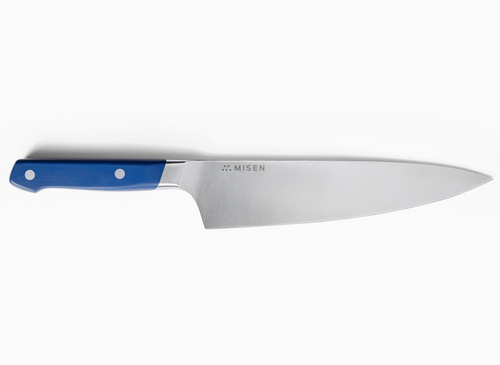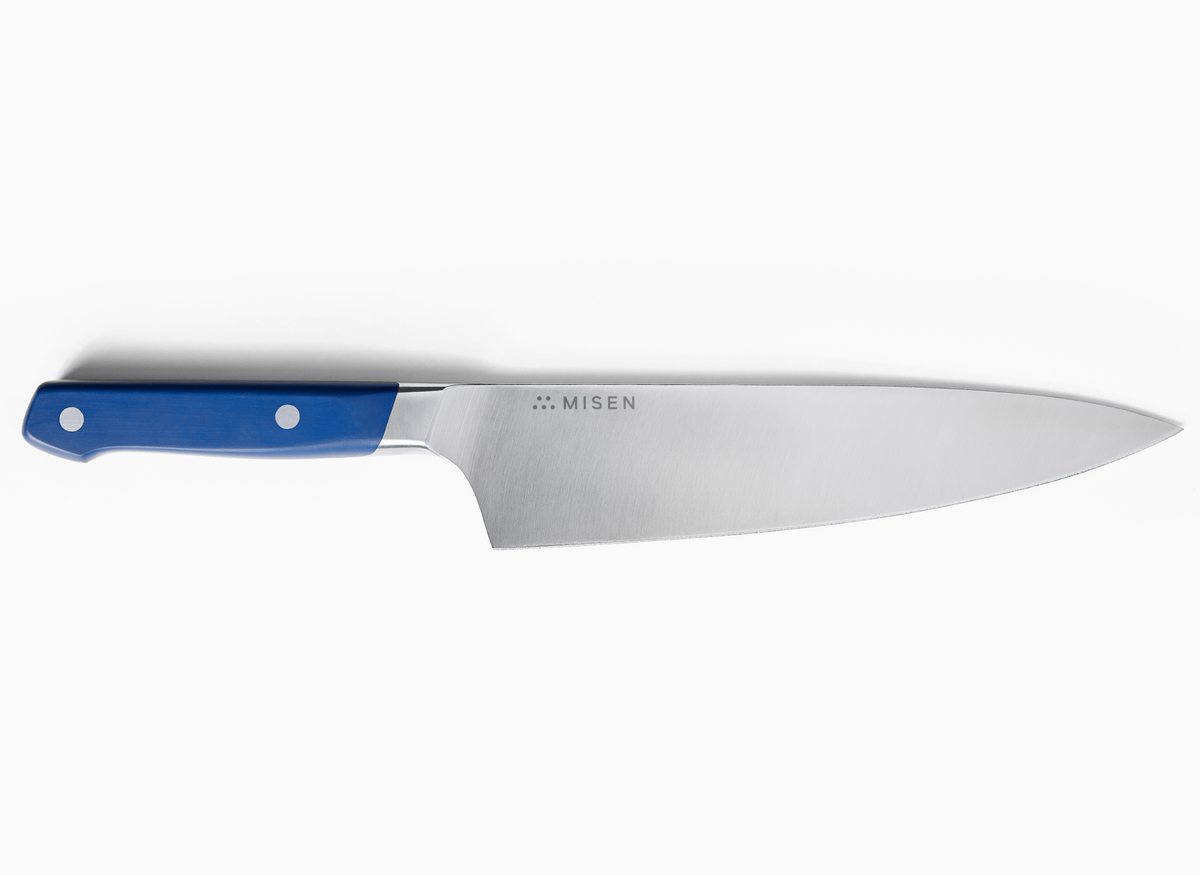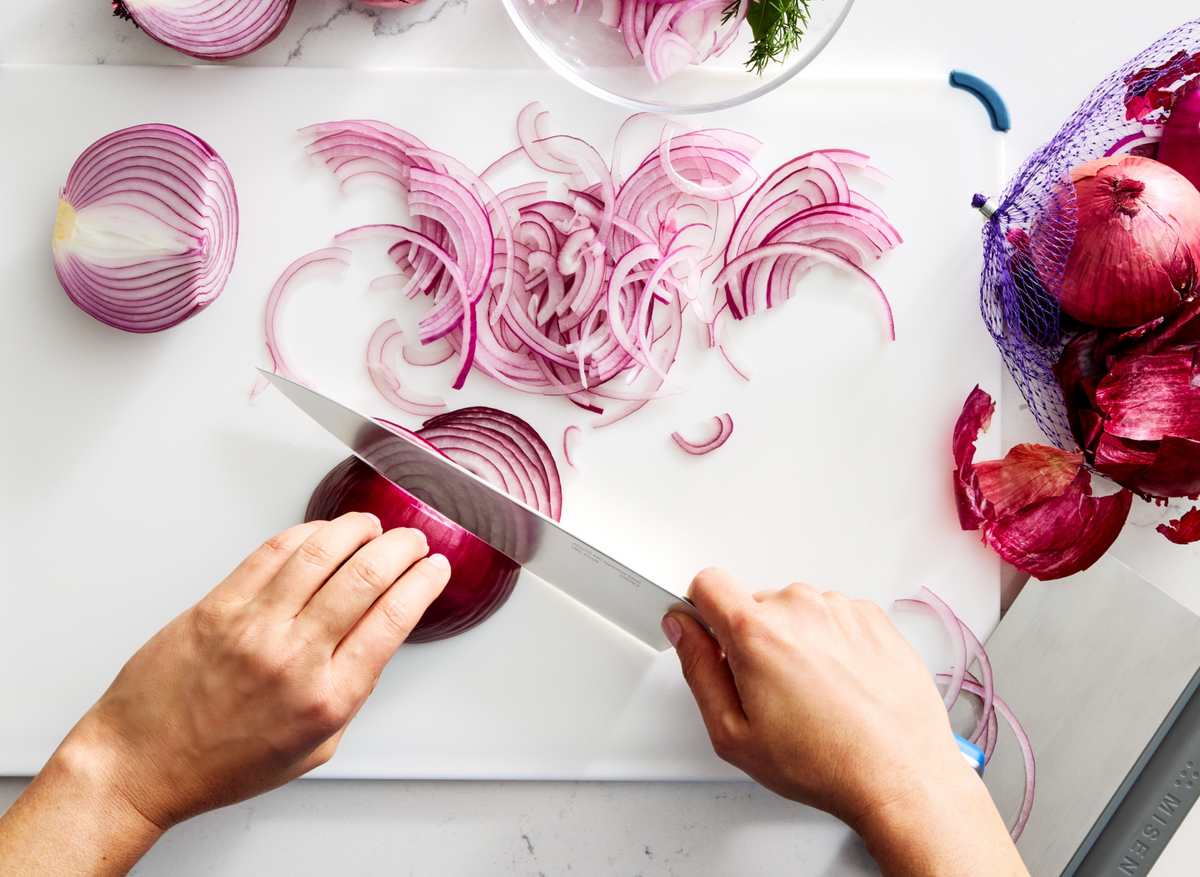The Best Kitchen Knife Set To Unleash Your Inner Chef

Discover the essential elements of a high-quality kitchen knife set and learn how to select the perfect knives for your culinary needs. This comprehensive guide covers knife anatomy, essential types, materials, and techniques to elevate your cooking experience. By understanding these key aspects, you'll be equipped to make informed decisions and unleash your inner chef with confidence.
Understanding Kitchen Knife Essentials
The anatomy of a quality kitchen knife
A quality kitchen knife is more than just a sharp blade. Understanding its anatomy is crucial for any aspiring chef. The blade, the heart of the knife, consists of several key components that work together to provide precision and efficiency in the kitchen.
The tip, located at the front third of the blade, excels in fine slicing tasks. Moving along the blade, we find the cutting edge or belly, which performs the bulk of chopping and slicing duties. The spine, the blunt top edge, provides stability for precision work. At the rear of the blade, the heel offers maximum strength for tough ingredients.
The tang, an extension of the blade into the handle, enhances overall balance and durability. Many knives feature a bolster, a thick metal junction between blade and handle, adding weight and improving balance. The handle itself, crafted from various materials, should offer a comfortable grip. Some designs incorporate a crop or knife guard to protect the user's hand. Finally, the pommel at the handle's end contributes to the knife's overall balance.[1]
Key types of knives every home chef needs
Every well-equipped kitchen should have three essential knives. The chef's knife, with its versatile 8-inch blade, is the ultimate workhorse. Its wide, rigid, triangular blade excels at tasks from finely chopping vegetables to breaking down poultry. This versatility makes it an indispensable tool for any cooking enthusiast.
The serrated knife, often called a bread knife, features a scalloped edge perfect for slicing through crusty loaves, soft tomatoes, and delicate cakes without squishing. Look for a long blade, typically 7-10 inches, to minimize effort while cutting.
Finally, the paring knife, with its short 3-4 inch blade, is ideal for precise, delicate work like peeling fruits, deveining shrimp, or hulling strawberries. Its small size allows for excellent control when working with small ingredients. With these three knives, home cooks can tackle nearly any kitchen task with confidence and efficiency.[2]
Our Santoku knife is an excellent alternative to the traditional chef's knife, offering a flatter profile that's perfect for push-cutting and creating paper-thin vegetable slices.
Materials and construction: from blade to handle
The blade of a quality kitchen knife is typically crafted from high-carbon stainless steel, offering an optimal balance of sharpness, durability, and corrosion resistance. This material allows for a razor-sharp edge that maintains its cutting prowess over time while resisting rust and stains.
Some premium knives feature Damascus-style blades, which are created by layering different types of steel to combine the benefits of hardness and flexibility. The tang, an extension of the blade that runs through the handle, plays a crucial role in the knife's balance and stability. Full tang knives, where the metal extends the entire length of the handle, offer superior balance and durability compared to partial tang designs.
Handle materials vary widely, from traditional wood to modern synthetics like G10 or Micarta. G10, a fiberglass laminate, stands out for its durability, excellent grip, and resistance to moisture and chemicals, making it an ideal choice for professional-grade kitchen knives.[3]
Selecting the Perfect Knife Set
Evaluating knife set compositions and versatility
When evaluating knife set compositions, consider the essential knives every home chef needs. A versatile 8-inch chef's knife, a serrated bread knife, and a paring knife form the core of any well-equipped kitchen. Some sets include specialty blades like santoku knives, boning knives, or kitchen shears, which can enhance versatility for specific tasks.
The quality of individual knives within a set can vary, so it's crucial to assess each blade's performance. Look for sets that offer a balance between essential knives and specialized tools, ensuring you have the right blade for every culinary challenge. Consider the materials used in both blades and handles, as these factors influence durability, comfort, and maintenance requirements. High-carbon stainless steel blades and ergonomic handles made from materials like G10 or wood can provide an optimal combination of performance and longevity.[4]
Balancing quality and budget considerations
When selecting a kitchen knife set, it's crucial to strike a balance between quality and budget. High-end sets offer exceptional craftsmanship and durability but come with a hefty price tag. For serious home cooks or professionals, investing in these premium sets can be worthwhile due to their superior performance and longevity.
However, for those on a tighter budget, mid-range options provide excellent value, offering sharp blades and comfortable handles at a more accessible price point. It's important to consider the types of knives included in the set, ensuring you have the essential pieces like a chef's knife, paring knife, and serrated bread knife.
Some budget-friendly sets may include unnecessary filler items, so focus on quality over quantity. Additionally, consider the construction of the knives, opting for full-tang blades with ergonomic handles for better balance and durability. Ultimately, the best knife set for you will depend on your cooking habits, skill level, and budget constraints.[5]
Ergonomics and comfort: finding the right fit
Ergonomics plays a crucial role in kitchen knife handle design, significantly impacting comfort and control during use. A well-designed ergonomic handle fits naturally in the hand, reducing fatigue and enhancing precision during prolonged cooking sessions. Factors such as handle shape, material, and texture contribute to overall ergonomics.
Contoured handles with slight curves or textured surfaces provide a secure grip, even when working with wet or greasy ingredients. Materials like high-quality synthetic polymers or composite materials offer durability and moisture resistance while allowing for optimal shaping to fit the hand.
The balance between blade and handle is also essential, as it affects maneuverability and reduces strain on the wrist and forearm. When selecting a knife, consider your hand size, grip style, and intended use to find the perfect ergonomic fit. Some knives, like the popular Santoku, feature handles with a slight curve and comfortable grip, making them ideal for extended use.
Ultimately, investing in knives with ergonomic handles can significantly improve your culinary experience, providing the comfort and control needed to tackle any kitchen task with confidence.[6]
Mastering Knife Skills and Techniques
Proper grip and cutting motions for different knives
Mastering proper grip and cutting motions is essential for efficient and safe knife use. The pinch grip, favored by professional chefs, offers superior control and precision. To execute this technique, wrap your pinky, ring, and middle fingers around the handle, then pinch the blade between your thumb and bent index finger near the bolster. This grip allows for more direct cuts and enhanced dexterity.
For your non-knife hand, employ the claw grip to protect your fingertips while guiding ingredients. Curl your fingertips under, using your knuckles to stabilize the food as you slice. When it comes to cutting motions, adapt your technique to the task at hand. Rock chopping works well for herbs, while a forward chopping motion suits denser ingredients.
For delicate slicing, such as with a Yanagiba knife used in sushi preparation, a fingertip grip on the handle with the index finger on the spine of the blade offers precise control. Remember, the key is to find a grip that provides stability, comfort, and safety for your specific cutting style and knife design.[7]
Essential cutting techniques for various ingredients
Mastering essential cutting techniques for various ingredients is crucial for efficient and precise food preparation. The julienne cut, producing matchstick-like pieces measuring 2 ½ inches long and 1/8 inch wide, is ideal for quick-cooking vegetables in stir-fries or as garnishes. For aromatic ingredients like garlic and ginger, mincing creates tiny, uniform pieces that infuse dishes with intense flavor.
The brunoise cut, resulting in 1/8-inch cubes, is perfect for creating elegant garnishes or adding texture to soups and sauces. When working with leafy greens or herbs, the chiffonade technique produces delicate ribbons ideal for garnishing or adding a fresh touch to salads. For larger, rustic presentations, the paysanne cut preserves the natural shape of vegetables while creating thin, irregular pieces suitable for hearty stews or roasted dishes.
By mastering these diverse cutting techniques, chefs can elevate their culinary creations through improved texture, flavor distribution, and visual appeal.[8]
Safety practices and knife maintenance
Safe knife handling practices are crucial for preventing accidents in the kitchen. Always carry knives with the blade pointed downward and angled away from your body. Use the phrase "sharp behind" when passing behind someone with a knife to alert them. Avoid distractions while cutting and never attempt to catch a falling knife. When not in use, store knives properly in designated blocks, racks, or magnetic holders to prevent accidental cuts.
Proper maintenance is essential for knife longevity and performance. Regular sharpening, ideally once a month for home cooks and weekly for professional chefs, ensures optimal cutting ability. Honing rods should be used frequently to realign the blade's edge, potentially extending sharpness up to 10 times longer. For Japanese knives with harder steel, opt for ceramic or diamond-coated honing rods.
Cleaning knives properly is crucial for both safety and longevity. Avoid leaving knives in sinks or dishwashers, as these environments can damage blades and create hazardous situations. Instead, hand wash knives immediately after use with warm water and mild detergent, dry thoroughly, and store properly. For carbon steel knives, consider applying a thin layer of food-safe oil to prevent rust formation.[9]
Unleashing Your Inner Chef with the Best Kitchen Knife Set
How quality knives elevate your cooking experience
Quality knives elevate the cooking experience by empowering chefs with precision and efficiency. A sharp, well-crafted blade allows for effortless slicing and dicing, preserving the cellular structure of ingredients and enhancing flavor profiles. The ergonomic design of premium knives reduces fatigue during prolonged use, enabling cooks to maintain focus and creativity throughout meal preparation.
Personal chef knives foster a sense of ownership and pride, boosting morale in professional kitchens. Chefs wielding their own carefully selected tools experience improved control and consistency in their culinary creations. The symbiotic relationship between a chef and their trusted knife set translates into time and energy savings, ultimately contributing to a more productive and enjoyable cooking process.
Investing in high-quality knives not only demonstrates a commitment to culinary excellence but also inspires chefs to continually refine their skills and push the boundaries of their craft.
Exploring advanced cutting techniques with premium knives
Mastering advanced cutting techniques with premium knives opens up a world of culinary possibilities. The rock chop, a fundamental skill, involves anchoring the knife tip on the cutting board and using a rocking motion to slice through ingredients efficiently. For delicate herbs, the chiffonade technique creates elegant ribbons by stacking leaves, rolling them tightly, and slicing thinly.
The julienne cut, producing matchstick-sized pieces, requires precision and control, showcasing the chef's knife's versatility. For proteins, the back-slice technique ensures clean cuts through meat fibers, minimizing tearing and preserving texture. Mastering the brunoise cut, which creates tiny, uniform cubes, elevates presentation and ensures even cooking.
These advanced techniques not only enhance the visual appeal of dishes but also contribute to balanced flavors and textures, allowing chefs to fully express their creativity and skill in the kitchen.[10]
Expanding your culinary repertoire with specialized blades
Specialized blades can significantly expand your culinary repertoire, allowing you to tackle specific tasks with precision and ease. A boning knife, with its narrow, flexible blade, excels at separating meat from bone and trimming fat, making it indispensable for butchery tasks. For those who love preparing sushi or sashimi, a Yanagiba knife's long, single-beveled edge creates ultra-thin, clean slices of fish.
The Santoku, a Japanese all-purpose knife, offers a flatter profile than a Western chef's knife, making it ideal for push-cutting and creating paper-thin vegetable slices. Bread enthusiasts will appreciate a serrated knife's ability to slice through crusty loaves without crushing the soft interior. For intricate garnish work or peeling fruits, a paring knife's small size and pointed tip provide unparalleled control.
By incorporating these specialized blades into your kitchen arsenal, you can elevate your cooking techniques and tackle a wider range of culinary challenges with confidence.
Caring for Your Kitchen Knife Investment
Proper cleaning and storage methods
Proper cleaning and storage methods are crucial for maintaining the quality and longevity of your kitchen knives. After each use, especially when cutting acidic foods like lemons or tomatoes, wipe your knife clean with a kitchen towel to remove food particles and prevent corrosion. Wash your knives by hand using mild soap and hot water, avoiding prolonged soaking which can lead to bacteria build-up in the handle.
Immediately dry your knife with a hand towel or paper towel to prevent rusting and germ accumulation. For added protection, consider applying a thin layer of neutral oil to the blade using a paper towel, working carefully towards the edge. When it comes to storage, avoid tossing knives loosely in drawers where they can chip or dull. Instead, use knife blade covers, a kitchen knife block, or a magnetic knife rack with blades facing upward for safe and proper storage.
Avoid the dishwasher at all costs, as the heat and harsh detergents can damage both the blade and handle. By following these cleaning and storage practices, you'll ensure your knives remain sharp, hygienic, and ready for your next culinary adventure.
Sharpening and honing techniques for longevity
Regular honing is essential for maintaining knife sharpness between full sharpenings. Use a fine-grit ceramic honing rod, which is less destructive than steel and suitable for most kitchen knives. Hold the rod vertically on a cutting board and draw the knife down at a 20-degree angle for German knives or 15 degrees for Japanese blades, using light pressure. Alternate sides, performing 3-4 swipes per side. Hone before each use or at least weekly to realign the edge.
For thorough sharpening, consider using a whetstone, which offers precision but requires practice. Submerge the stone in water for an hour, then maintain a consistent angle while pulling the blade across the stone 10-50 times per side, starting with the coarsest grit and progressing to finer grits. Electric sharpeners provide convenience but may remove more metal.
To extend knife longevity, clean and dry blades immediately after use, especially when cutting acidic foods. Store knives properly in a block, on a magnetic strip, or with individual blade guards to prevent damage and maintain sharpness.[11]
When to replace or upgrade your knife set
Recognizing when to replace or upgrade your knife set is crucial for maintaining culinary efficiency and safety. Look out for telltale signs such as loose rivets, which can cause dangerous imprecision in cutting. A chipped blade, while minor nicks can be smoothed out, large chips from improper use may render the knife irreparable. A broken or bent tip significantly impairs precision and often warrants replacement. If you notice a thick spine causing ingredients to wedge rather than slice cleanly, it's time for aggressive thinning or a new knife.
While quality knives can last a lifetime with proper care, factors like blade material and frequency of use impact longevity. Invest in professional sharpening services or a reliable knife sharpener to maintain edge quality, but be cautious not to over-sharpen, as this can gradually wear down the blade. Consider upgrading your set if you find your current knives uncomfortable or ill-suited to your cooking style.
When selecting a new set, factor in your cooking habits, preferred ingredients, and budget. Entry-level quality starts around $50-100 per knife, with high-end options ranging from $150-300+ per knife, featuring premium materials like carbon or Damascus steel. Remember, investing in fewer high-quality knives often yields better results than a large set of lower-quality blades.[12]
Conclusion
Investing in a high-quality kitchen knife set is a game-changer for any home chef or culinary enthusiast. By understanding the anatomy of a quality knife, selecting the right types for your needs, and mastering proper techniques, you'll elevate your cooking experience to new heights. Remember to care for your knives properly, keeping them sharp and well-maintained for years of use.
With the right tools in hand, you'll be able to tackle any recipe with confidence and precision. Ready to upgrade your kitchen arsenal and unleash your inner chef? Shop Now to explore our range of premium kitchen knives and start your culinary journey today.
- A quality kitchen knife set should include a chef's knife, serrated bread knife, and paring knife as essential components.
- High-carbon stainless steel blades offer the best balance of sharpness, durability, and corrosion resistance.
- Proper grip techniques, such as the pinch grip and claw grip, are crucial for safe and efficient knife use.
- Regular honing and proper cleaning are essential for maintaining knife sharpness and longevity.
- Investing in specialized blades can expand your culinary repertoire and enhance your cooking techniques.
- BBC Good Food. (n.d.). The anatomy of a knife.
- Serious Eats. (n.d.). The Best Essential Knives.
- Kitchen Kapers. (n.d.). How to Choose Kitchen Knives.
- Serious Eats. (n.d.). The Best Essential Knives.
- Food & Wine. (n.d.). The Best Knife Block Sets.
- SNF Global. (2024). Enhancing Comfort and Control: The Impact of Ergonomics in Kitchen Knife Handles.
- Bon Appétit. (n.d.). How to Hold a Knife.
- Escoffier. (n.d.). 8 Knife Cuts Every Professional Cook Should Know.
- WebstaurantStore. (n.d.). Knife Safety Tips.
- Knives and Tools. (n.d.). Five tips to cut with a chef's knife.
- Kitchen Knife Guru. (n.d.). How to Hone a Knife.
- Chubo Knives. (n.d.). Signs It's Time to Replace Your Chef's Knife.








